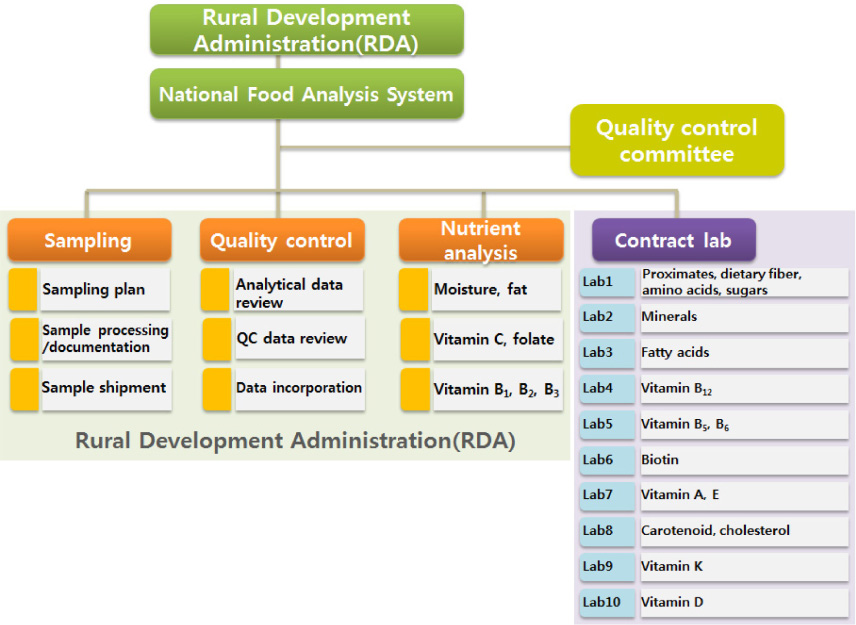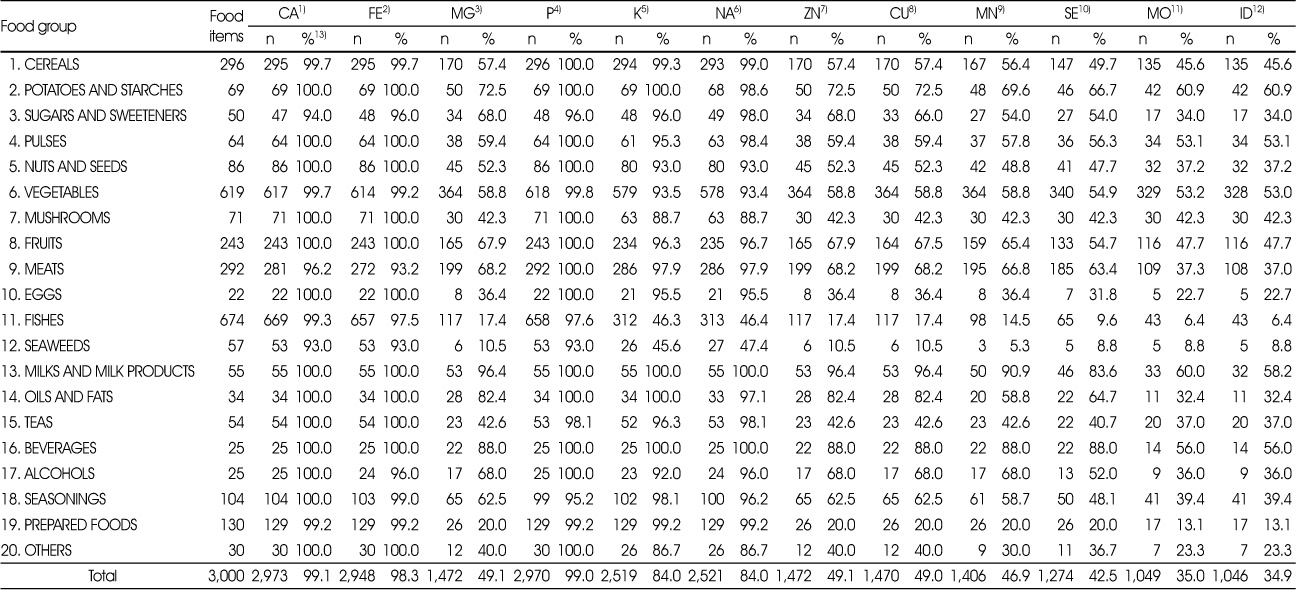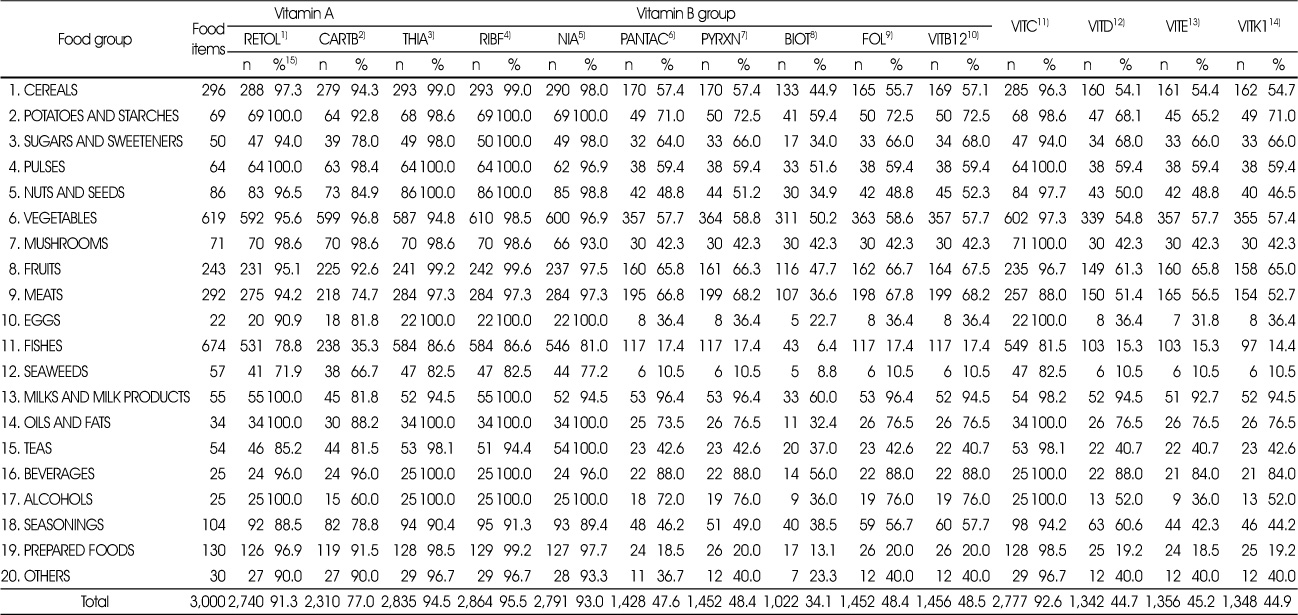Development of 9th Revision Korean Food Composition Table and Its Major Changes
Article information
Abstract
Objectives
The Korean Food Composition Table (KFCT) was first published in 1970, and has since been updated every five years by the Rural Development Administration (RDA). This study was conducted to introduce the development strategies, features, and challenges of the 9th revision of the KFCT.
Methods
Due to the increasing demands of nutrient database users and generators, the RDA started a new research project in 2013 to improve the quantity and quality of data for the 9th revision of the KFCT. Over 1,000 food items frequently consumed in Korea were selected as key foods using the results of the Korean National Health and Nutrition Examination Survey. About 200 raw materials and processed food items were collected and analyzed every year. Target nutrients that were analyzed by collaborative labs, such as, sugars, selenium, iodine, and biotin, were increased from 22 to 43. Analytical sample handling procedures and data quality evaluation systems were also established in collaboration with 10 contracted labs. Data were evaluated for data quality according to the FAO/INFOODS, CODEX, and AOAC guidelines.
Results
The 9th revision contains data on 3,000 food items and up to 43 and 140 food nutrients for the printed table and the excel database file, respectively. Overall, 1,485 data items were newly added, 973 of which were provided by the RDA and 512 were cited from foreign nutrient databases. The remaining 1,515 food items were maintained as in the 8th revision.
Conclusions
The KFCT provides the basic infrastructure for food and nutrition policy, research, and dietary practice in South Korea. The use of the KFCT has increased exponentially in the past few years in both public and private sectors; accordingly, increased efforts should be paid to the preparation, improvement, and maintenance of KFCT.
Acknowledgments
This study was supported by 2017 the RDA Fellowship Program (Project No.PJ01261801) of National Institute of Agricultural Sciences, Rural Development Administration, Republic of Korea.










